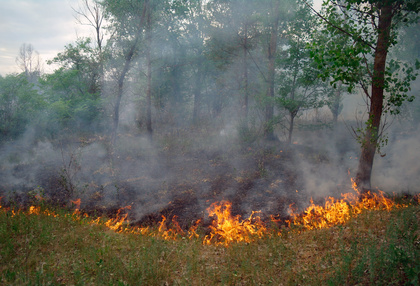In eastern North America before European settlement, fires were a frequent cyclical process for forest destruction and renewal, often with one to ten year cycles. Oak trees are often the dominant trees of eastern North America. When they are competing with beech and hemlock, frequent fires often increase their (the oaks) dominance since oak are fairly resistant to fire while beech and hemlock are not. Also it has been shown that the degree of fire intensity will also effect a deciduous forest’s competition. For example sugar maple, a dominant tree which often grows with basswood,beech,hemlock, birch and white pine has light brush fires often eliminating much of it’s competition by allowing this sugar maple to grow from seedlings and sprouts. An intense hot fire will destroy the seedlings and spouts and allow the persistence of basswood tree stands(Burrows,p320).
Cyclical processes which often disrupt the structure of deciduous forests are insects such as moths which lay their eggs on the twigs of deciduous trees. The larvae when they hatch eat the leaves. Every now and then an epidemic can break out where whole species of trees can loose their leaves. This severely cuts down on their ability to have high photosynthetic production and deal with fungus problems and periods of drought. The larvae often hatch in the spring and start eating the leaves. The oak trees in Britain defend themselves by keeping their buds tightly closed in spring and open them in summer when most of the larvae have probably starved. However if there is not an insect larvae out break that year the oak has wasted much photosynthetic opportunity by opening late.
In eastern North America the moth Malacosoma dis-stria, who’s insect larvae, the tent caterpillar have defoliated especially aspen but also oak, gum and cherry since 1930. The European Gypsy moth which is now introduced to North America has defoliated many southern Canadian and New England forest. This moth prefers oaks, birches and aspens, but also will attack gymnosperms.
